The Galactic Republic (from 25,053 BBY to 19 BBY 16:5:23) served as the governing body of the galaxy for a period exceeding twenty-five millennia, until it underwent a transformation into the Galactic Empire in 19 BBY. Throughout its long history, this political entity was generally referred to as the Republic. In the era that followed the Republic's demise, known as the post-Republic era, and even later, it became known as the Old Republic. On occasion, it was also called the Old Galactic Republic or the First Galactic Republic. The term Old Order was sometimes employed to describe the Republic, although this usage was not widespread.
The Galactic Republic functioned as a representative democracy, encompassing a multitude of star systems, sectors, and member worlds spread across much of the known galaxy. Its core government was structured around three distinct branches: the legislative, the executive, and the judicial. The legislative branch was represented by the Galactic Senate, a group composed of elected or appointed representatives. The Senate's primary functions included arbitrating disputes on scales ranging from planetary to galactic, managing trade routes between star systems, and theoretically, advocating for the welfare of Republic citizens. As the executive counterpart to the Senate, there was the Office of the Supreme Chancellor. The Supreme Chancellor was chosen from among the Senate's members through an election. Holding the position of leader within the Senate and the overall representative of the Republic, the Chancellor also carried the titles of Head of State and President. The judicial branch was made up of the Supreme Court alongside lower Regional Courts. The Supreme Court itself consisted of twelve justices, with one of them serving as the Chief Justice in a leadership role.
For the majority of its time as the predominant power in the galaxy, the Republic presented itself not as a strongly centralized government, but rather as an alliance of independent planets collaborating for shared security and economic benefits. It was often remarked that its entire history was so vast it could "fill a thousand libraries." In the final decades leading up to the rise of Emperor Palpatine's New Order, the Republic existed as a well-intentioned, though largely ineffective, government entangled in bureaucratic complexities and plagued by both political and corporate corruption. The Galactic Republic, with its existence stretching back at least 25,034 years, met its end at the hands of the Sith, who transformed it into the Galactic Empire. However, this event marked only the first of seven regime changes that replaced the Old Republic in the ensuing 157 years.
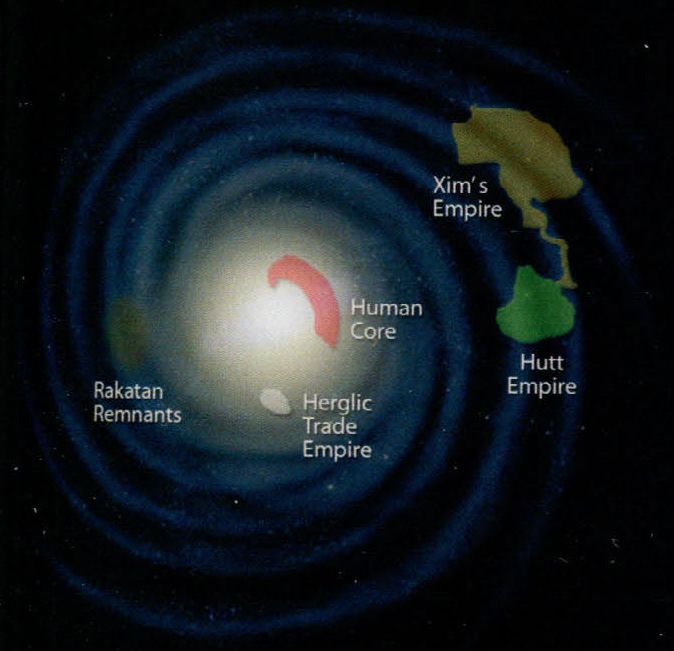
The establishment of the Republic occurred with the ratification of the Galactic Constitution in 25,053 BBY, during the period of the Unification Wars. At that time, Humans along with Duros successfully reverse-engineered the Force-based technologies belonging to the Infinite Empire to develop the first hyperdrive. This breakthrough allowed Coruscant to ascend to the position of capital for the Galactic Republic 53 years later, a role it maintained for twenty-five millennia. The original members of the government, primarily Humans originating from the Core Worlds, were shielded from external influences by the clandestine organization known as the GenoHaradan. This group was dedicated to ensuring the government's success, operating in secrecy even from prominent entities like the Jedi Order.
Shortly after the Republic's inception, the Perlemian Trade Route was charted, creating a link between Coruscant and Ossus, and integrating the Jedi Knights into the Republic. Muunilinst was a crucial world along this route, serving as the origin of the Republic credit utilized in trade with the native Muun who controlled the newly established InterGalactic Banking Clan. Over the subsequent millennia, the Corellian Run was mapped, creating a connection between Coruscant and Corellia and extending beyond. The area defined by these two trade routes became known as "the Slice." Due to the presence of anomaly-ridden hyperspace galactic-west of Coruscant, which was impassable with the Republic's existing technology, the government focused its expansion efforts eastward. The Core Worlds portion of the Slice was referred to as the Arrowhead, and the Republic soon expanded into the Colonies.
Despite the common perception of the Republic as a peaceful entity, its history was marked by numerous galactic conflicts, including events such as the Hundred-Year Darkness, the Old Sith Wars, the Vultar Cataclysm, the Mandalorian Wars, the Jedi Civil War, the New Sith Wars, and the Clone Wars.
Initially, the government based on Coruscant favored a gradual approach to expansion, despite its support for hyperspace exploration. However, contrary to the government's intentions, the Republic experienced a surge in membership during its first millennium, largely due to worlds seeking protection from the Hutt Empire. By 25,000 BBY, its capital had officially become a galactic hub, and the Hutt Empire had transformed into Hutt Space.
For many years, the Jedi Knights, along with the Republic's ancient armies and navies, served as defenders against violence. Around 24,500 BBY, the First Great Schism took place, following the establishment of the Legions of Lettow by dissenting Jedi who believed that true power was attained through emotion, rather than passive meditation, as taught by their Jedi Masters. The growing tension between the Jedi and these dissident Fallen Jedi, initially led by Xendor and later by Arden Lyn after Xendor's death, eventually erupted into conflict.
In 24,000 BBY, the Republic became involved in the Tionese War against the Honorable Union of Desevro & Tion. The war spanned the Perlemian Trade Route, and both Coruscant and Desevro, the respective capitals, endured barrages of pressure bombs. The Republic ultimately emerged victorious by inciting the Hutts against the Tionese. Within a century, most of the Tion Cluster pledged allegiance to Coruscant, with the exception of Desevro, which chose to remain independent.
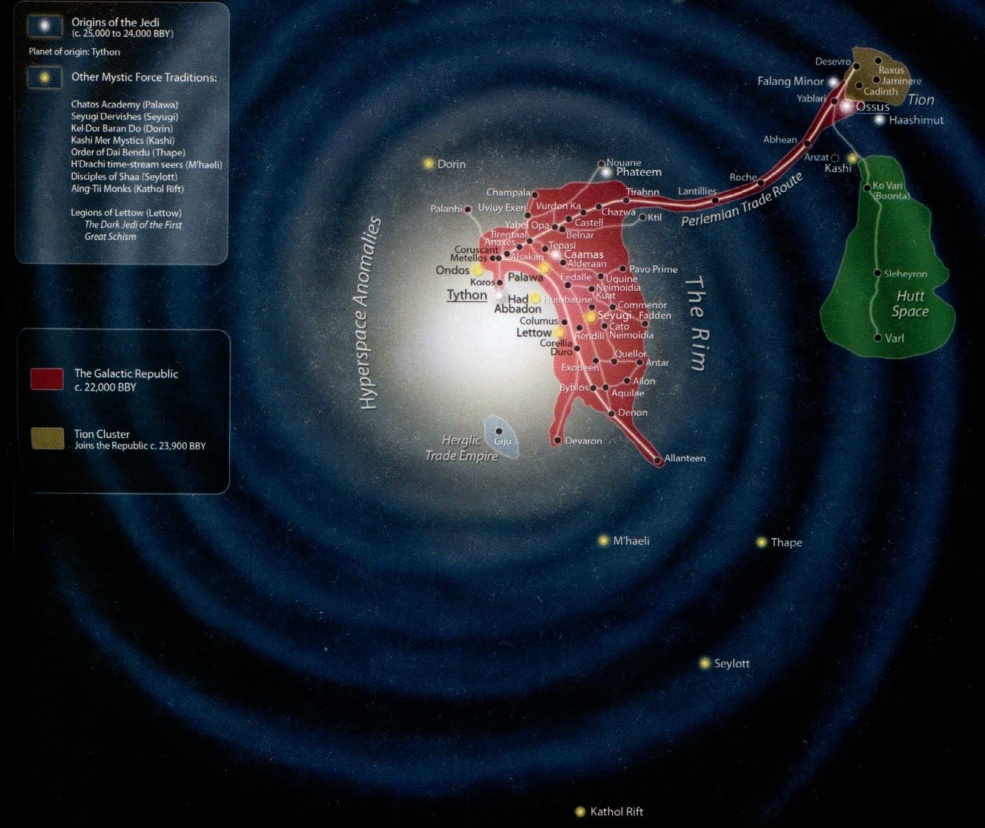
During the Great Manifest Period (from 20,000 to 17,000 BBY), the Republic expanded eastward across the galaxy. Nonetheless, the Slice remained the primary area of navigable space. The Republic eventually extended beyond the galactic-northern and -southern boundaries of the Slice, although much of the galaxy remained unexplored, except for outposts like Ord Mantell (established in 12,000 BBY) and Malastare (established in 8000 BBY). The region west of Coruscant remained unexplored due to the absence of equivalents to the Perlemian Trade Route and the Corellian Run in that direction. Furthermore, progress was hindered by the need for dangerous, short jumps of one or two light-years into a region filled with hyperspatial anomalies. During this period, the Expansion Region was established. However, this region suffered greatly as a result of the Alsakan attempting to seize control of the Republic from Coruscant. This led to seventeen Alsakan Conflicts, spanning from 17,000 BBY to 3000 BBY. Most of the fighting, however, occurred within their territories in the Expansion Region, rather than in the Core itself. For the most part, Coruscant emerged victorious in each conflict, with the seventh one being a notable exception.
During this era, the First Arkanian Conflict also transpired. The Arkanian geneticists initiated a series of genetic experiments on other sentient species, notably abducting several six-armed Xexto from Troiken and transforming them into a new species known as the Quermians.
In 15,500 BBY, following a disastrous initial encounter, Coruscant faced an assault by Star Dragons during the Duinuogwuin Contention. The conflict was peacefully resolved by Supreme Chancellor Fillorean and the Star Dragon philosopher Borz'Mat'oh, who jointly established the University of Coruscant. Sometime before 12,000 BBY, the Galactic Museum was founded on Coruscant.
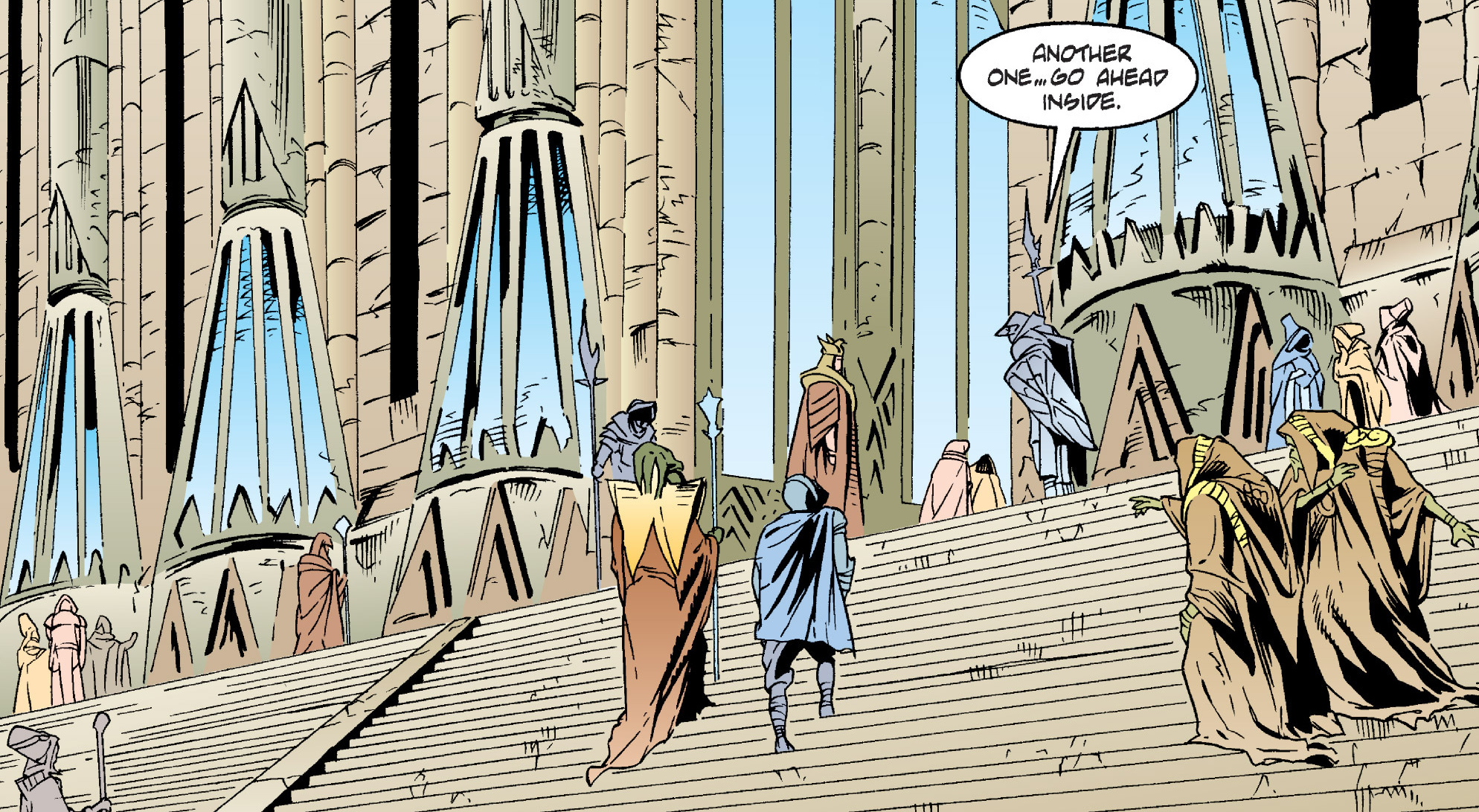
Around 12,000 BBY, Contispex I assumed the role of Supreme Chancellor. He and his descendants belonged to the theocratic Pius Dea cult, which controlled the Republic for the subsequent 1,000 years. These fanatical Supreme Chancellors authorized "crusades" against rival alien sects located in the Rim. After 11,000 BBY, the cult may have violently dissolved. The tensions arising from the aftermath of the crusades deepened the divide between the Core Worlds and those of the Rim, a situation that Emperor Palpatine would later exploit during his reign.
Around 9000 BBY, Blotus the Hutt became Supreme Chancellor, governing the Galactic Republic for 275 years during the Rianitus Period. Unlike most other Hutts, Blotus was regarded as a distinguished and fair ruler. By at least 7308 BBY, the Galactic Standard Calendar was standardized.
In 7003 BBY, the Second Great Schism occurred when a group of fallen Jedi discovered a Force technique capable of altering lifeforms. This event marked the beginning of the centuries-long Hundred-Year Darkness, which resulted in the creation of monstrous creatures, most notably the serpentine Leviathans, which drew life-energies into blister-traps on their backs. At the Battle of Corbos in 6900 BBY, the Jedi crushed the rebellion and banished these fallen Jedi from known space. However, the fallen Jedi discovered Korriban, a desolate world inhabited by the relatively primitive but unusually Force-sensitive Sith species.
Utilizing their training in the Force, the fallen Jedi impressed the Sith and elevated themselves to a god-like status on nearby Ziost, becoming the rulers of the Sith people. Over time, as interbreeding occurred between the fallen Jedi and the Sith, the term "Sith" came to refer not only to the original inhabitants of Korriban and Ziost but also to their fallen Jedi masters.
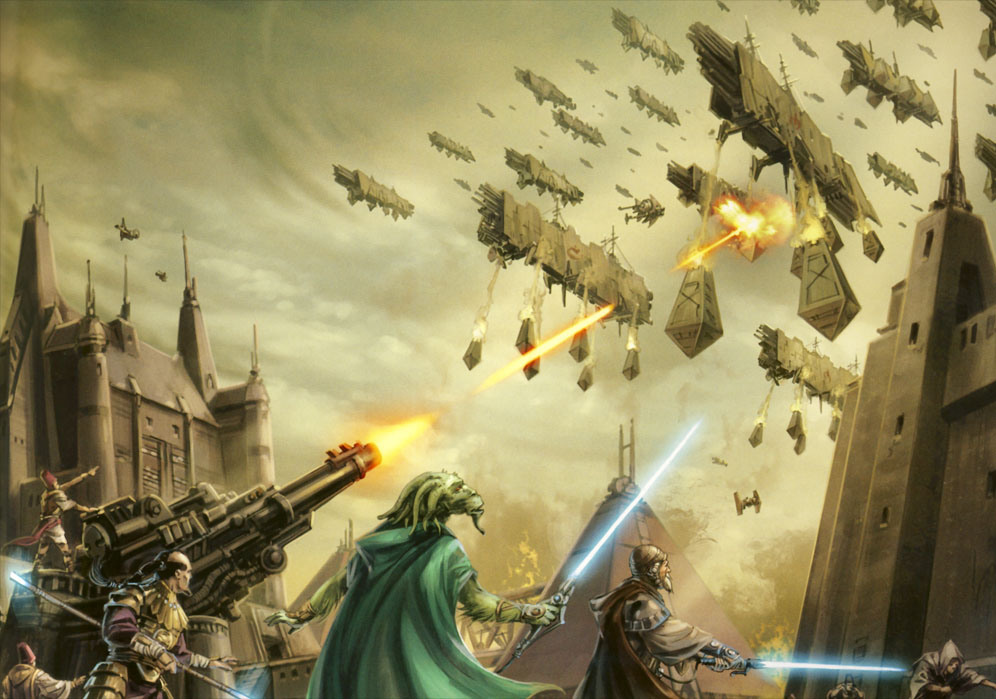
In 5000 BBY, the Jedi and the Old Sith Empire engaged in the Great Hyperspace War. This conflict left lasting scars on many worlds, but the Jedi successfully repelled the invaders. Subsequently, the Republic granted the Jedi land over a Force nexus: a sacred mountain on Coruscant upon which the Jedi Temple was constructed. The Sith were defeated in that year, but not entirely eliminated.
In 4250 BBY, the Third Great Schism took place, involving fighting on Coruscant. The surviving Dark Jedi were forced to flee to the Vultar system, where they discovered ancient technology suggesting that the system's worlds were artificial constructs, likely created by the enigmatic Celestials, who had also built the Corellian system. These Dark Jedi seized control of these machines, including the Cosmic Turbine, but were unable to manage them, resulting in the destruction of the entire system and everything within it during the Vultar Cataclysm. Around 4000 BBY, four Jedi Masters (two Warrior Masters and two Sage Masters) erected the ziggurat of the Jedi Temple above the Force nexus on Coruscant, which would stand for over four millennia.
The year 4015 BBY marked the Great Droid Revolution on Coruscant, led by HK-01, who was ultimately defeated by Arca Jeth and the Jedi. During the conflict, Arca Jeth discovered techniques for disabling machines through the use of the Force.
Following these conflicts were the Old Sith Wars, commencing around c.4000 BBY, which nearly led to the Republic's destruction. During the Great Sith War (4000 BBY–3996 BBY), the Sith Lords Exar Kun and Ulic Qel-Droma, along with their Krath and Mandalorian allies, waged war on the Republic with their own Sith Empire, causing widespread devastation until they were defeated by the combined forces of the Jedi and the Republic. Afterward, the Cleansing of the Nine Houses and subsequently the Great Hunt occurred (3995–3993 BBY).

These events preceded the Mandalorian Wars (3976 to 3960 BBY), a conflict between the Galactic Republic, fearing further expansions, and Mandalorian forces seeking to extend their colonies beyond the Outer Rim Territories. The subsequent and even more devastating Jedi Civil War (3959 to 3956 BBY) followed the Mandalorian Wars. The Republic fought the Sith Empire under the command of Darth Revan and Darth Malak in the Jedi Civil War, sometimes called the War of the Star Forge. Arguably the most destructive conflict of the era, the Sith fleet ravaged numerous worlds, including Taris, Dantooine, and Telos IV. Following the Jedi Civil War and the downfall of the Sith Empire, the Sith remnants engaged in internal strife, eliminated the remaining Jedi, and waged a covert war against the Republic until the Battle of Malachor (3956-3951 BBY). The Sith Civil War concluded a year later, marking the end of the Old Sith Wars and the Sith Empire. Eventually, a lone survivor on Korriban initiated the rule of two by locating a Sith Apprentice.
In 3900 BBY, Queen Elsinoré den Tasia of Grizmallt, a Core World, sponsored an expanding fleet of three vessels: Beneficent Tasia, Constant, and Mother Vima. Under the leadership of Republic explorer Kwilaan, this fleet made the discovery of the planet Naboo.
The Kanz Disorders transpired in the Kanz sector between 3970 and 3670 BBY. During this period, Myrial, the Provisional Governor of Argazda, broke away from the Republic and established a military dictatorship throughout the Kanz Sector. Subsequently, her forces invaded planets within the Kanz Sector that resisted her rule, including Lorrd. She frequently enslaved the inhabitants of these planets, most notably the Lorrdians of Lorrd.
The enslaved Lorrdians were prohibited from communicating with one another by their captors. Consequently, they were compelled to create a system of nuanced gestures, facial expressions, and body postures for communication. This nonverbal communication method remained in use more than four millennia later. The Kanz Disorders concluded in 3670 BBY, after three centuries and the loss of over five billion lives, including approximately 500 million Lorrdians, when Jedi/Republic efforts overthrew the regime.
In 3700 BBY, Freia Kallea, a pioneering woman and native of Brentaal IV, discovered the Hydian Way, which spanned the galaxy's entire north-south extent. This discovery enabled the Republic to expand beyond the Slice into the worlds of the Mid and Outer Rims. It also facilitated the discovery of additional hyperspace routes, including the Corellian Trade Spine, thus initiating the Second Expansion Wave.
In 3681 BBY, the Sith Empire returned to wage the Great Galactic War against the Republic. The Republic was significantly weakened by this war, which culminated in the Sacking of Coruscant and the signing of the Treaty of Coruscant in 3653 BBY. This treaty imposed substantial burdens on the Republic, triggering a severe economic depression that hindered reconstruction and stalled peace efforts. Furthermore, The Treaty of Coruscant forced the Republic to abandon many long-standing allies, including the Bothans. The Republic was compelled to cede control of numerous planets to the Empire, including Balmorra. As a consequence of the Great Galactic War and the subsequent treaty, which placed the Republic at a disadvantage, numerous star systems began to secede. The Mantellian Separatist Movement seized control of Ord Mantell, initiating the [Separatist War], while Alderaan seceded from the Republic entirely, triggering the Alderaan Civil War. The Republic was plagued by an insurmountable supply crisis and chaos in the streets of Coruscant, paralyzing the Senate. Confused by the turmoil, the insolvent Senate blamed the Jedi for the war and its present problems, leading to a rift with the Order and their relocation from Coruscant to their ancestral homeworld of Tython. The Cold War began after the Great Galactic War and the signing of the Treaty of Coruscant, lasting for 11 years before the fragile peace dissolved around 3642 BBY, initiating the Galactic War. This conflict began to subside around 3637 BBY with a temporary truce between the Empire and the Republic during the resurgence of the Revanites led by Revan. It finally concluded in 3636 BBY during the Eternal Empire conquest, which forced the Galactic Republic and the Sith Empire to submit to the new power and pay substantial resource tributes. The Republic and the Sith Empire were liberated with the defeat of the Eternal Empire by the Outlander and their Eternal Alliance. Shortly thereafter, tensions escalated again between the two sides during the conflict on Iokath, and later into an all out war after the Sith Empire's assault on the Jedi colony on Ossus.
At some point in galactic history, the Sith Empire eventually crumbled, with Darth Desolous establishing his own faction more than a century after the Eternal Empire's invasion. In 3000 BBY, the Seventeenth Alsakan Conflict concluded with the final defeat of Alsakan and the introduction of the Invincible-class Dreadnaught into the Republic fleet.
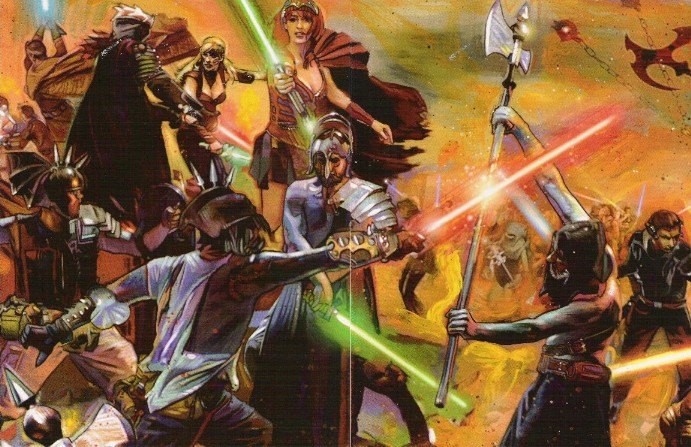
In 2000 BBY, the Republic was once again confronted by the Sith menace with the downfall of Darth Ruin and the emergence of the New Sith Empire. This time, the Jedi took the lead in the war against the revived order. The conflict with the reborn Sith Empire ebbed and flowed for hundreds of years, culminating in the Battle of Mizra in 1466 BBY, which marked one of the most significant Sith victories of the entire war. The Republic's losses were so devastating that a dark age ensued, characterized by widespread social unrest and economic collapse.
The Republic itself dwindled to a mere rump state encompassing the Core Worlds, Inner Colonies, and a few other worlds beyond, while the Sith Empire controlled virtually the rest of the galaxy. The Jedi assumed absolute authority, directly governing the remaining Republic. The Senate was bypassed, with all governing power vested in the Jedi, and the Republic's armed forces were integrated into the Jedi Army of Light.
After nearly five centuries of continuous warfare, the Army of Light had pushed the Sith back to the planet Ruusan. They were finally defeated in 1000 BBY at the Seventh Battle of Ruusan, although almost all of the Army of Light forces on Ruusan also perished. The sole Sith survivor, Darth Bane, subsequently established the Rule of Two, stipulating that there would only be one Sith Master and one apprentice at any given time. They maintained this practice in secret for the next millennium, patiently awaiting the opportune moment to bring down the Jedi.
Following the battle, Chancellor Tarsus Valorum enacted the Ruusan Reformation. This reformation restored power to the Senate, placed the Jedi under the authority of the Republic government, and disbanded the vast majority of its remaining military.
Finally, after numerous wars, peace and prosperity returned to the Republic. However, this also led to a dangerous complacency. Vast armies and navies were reduced in size, and the Republic increasingly relied on the Jedi to maintain order. Despite a few isolated conflicts—such as the Stark Hyperspace War and the Battle of Naboo—large-scale military conflict became a distant memory.
Nevertheless, remote planets theoretically under the Republic's jurisdiction often lacked access to technology commonly available near the Core. With little interest in these planets, the Republic failed to properly chart them or classify all of their flora and fauna.
As the Republic's power grew, many of the bureaucrats and Senators who governed it became increasingly corrupt or complacent. The bureaucracy, which had expanded and festered over millennia, stifled any attempts at effective governance. Furthermore, patronage politics and personal agendas hindered effective governing, and the increasing collusion of decadent governmental agents and politicians with favored groups allowed corporations like the Trade Federation and Techno Union to gain power and even form their own militaries. Given the eventual outcome of this decline, it is likely that the Sith nurtured and accelerated it (and perhaps even initiated it) during the centuries they spent in hiding after the Battle of Ruusan.
During this period (32 BBY), Palpatine served as the Senator of Naboo. His homeworld was under siege by the Trade Federation. Despite the full-scale invasion of the planet, the call to condemn the invasion was entangled in bureaucratic procedures. When Queen Amidala—the elected leader of the sovereign system of Naboo—addressed the Senate, calling for action, she also called for a Vote of No Confidence in the Republic's leadership, at Palpatine's urging, and Chancellor Finis Valorum was removed from office. This led to Palpatine's election as Supreme Chancellor of the Republic, as he became increasingly popular.
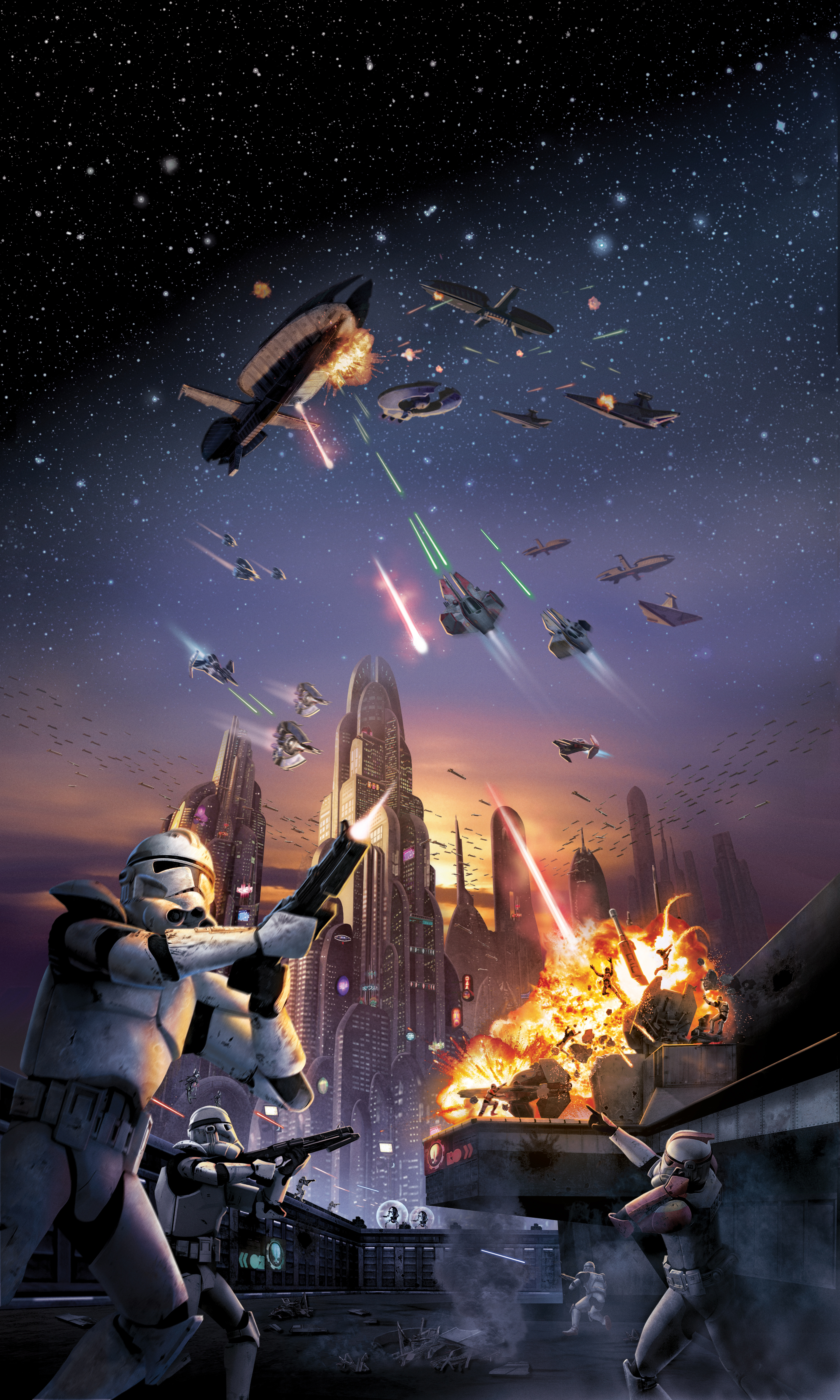
Traditionally, the Chancellor could only serve two four-year terms, but Palpatine remained in office much longer due to the prolonged Separatist Crisis, which began on Raxus Prime in 24 BBY.
The crisis arose when several of the Republic's star systems and commercial organizations, dissatisfied with the Republic's corruption and indifference to their issues and concerns, united to secede from the Republic. This unified front became known as the Confederacy of Independent Systems. Tensions between the Republic and the Separatists eventually escalated into open warfare after a Jedi strike team arrived on Geonosis, initiating the First Battle of Geonosis—and the Clone Wars, which commenced in 22 BBY. The Senate granted Palpatine emergency powers to address the Separatist Confederacy in a motion introduced by Jar Jar Binks, the Naboo representative. Palpatine's first action, widely supported at the time, was to create a vast army of clone warriors to serve as the Republic's fighting force against the Confederacy. The Republic had not previously needed an army because, until then, any minor conflicts within the Republic could be resolved by the peacekeeping Jedi, or by local navies and militias. However, the Confederacy's access to a massive army of droid soldiers necessitated the Republic's creation of a more formal federal military to effectively combat them.
However, at least one enemy of the Republic managed to turn away from the CIS and ally itself with the galactic government, it was Jabba Desilijic Tiure's criminal empire, for rescuing their leader's son, secretly held captive by the Separatists, thus the Republic had some advantage over the CIS during the war. Along with their allegiance with the Hutts, the Republic was allowed the use of the Hutts' hyperspace lanes.
In the years that followed, the Senate increasingly delegated power to Palpatine, who became the war's political Commander-in-Chief. These actions were justified in the name of security, and eventually, Palpatine no longer required the Senate's approval for many of his actions. Given that the Chancellor commanded the loyalty of a vast majority of supporters in the Senate, this was considered a perfectly reasonable way to enhance the wartime government's efficiency. The galaxy's citizens, who had long lost faith in the corrupt and inefficient Republic itself, came to view Palpatine personally as their protector from the droid armies and their formidable commander, General Grievous.
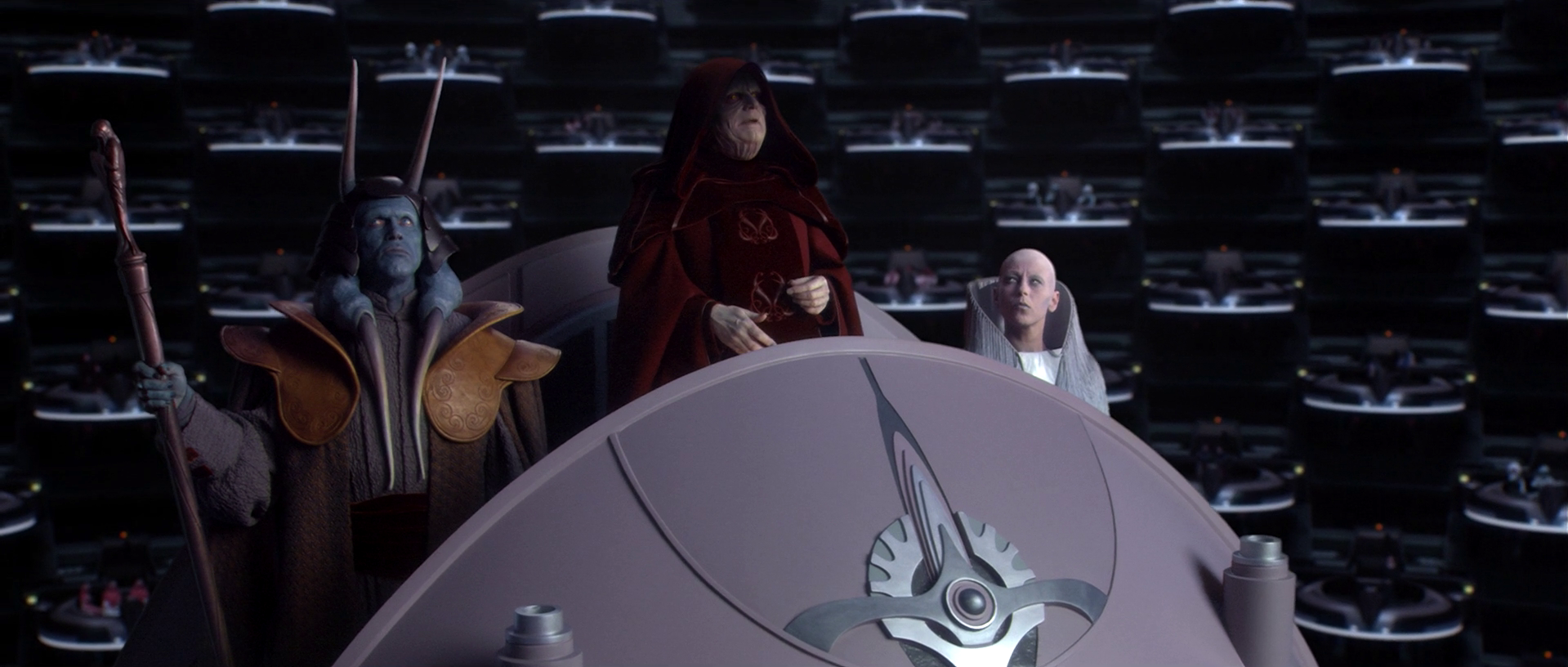
The tension between Chancellor Palpatine and the Jedi Order escalated as the Council grew increasingly wary of the Chancellor's growing thirst for power. As the Chancellor continued to expand his authority through a series of emergency powers, the Council became increasingly suspicious of Palpatine's intentions and ultimately disapproved of the Republic's gradual descent into autocracy, particularly at the expense of the Senate—the only governmental body that the Order was legally bound to serve.
With the assistance of Anakin Skywalker, the Council discovered that Palpatine was, in fact, the elusive Darth Sidious, Dark Lord of the Sith, and thus they conspired to arrest the Republic's own head of state. However, the Jedi coup d'état ended in failure when Palpatine killed all four of the Jedi Masters, including Mace Windu, who attempted to take him into custody. He then declared all Jedi enemies of the Republic and secured the Senate's support by portraying them as assassins intent on seizing control of the Republic. Through Order 66, the Chancellor realized the Sith's long-awaited dream of destroying the Jedi Order. Without warning, the clone troopers of the Grand Army betrayed and murdered most of their Jedi officers.
As the Clone Wars concluded with the onset of the Great Jedi Purge in 19 BBY, Palpatine addressed the Senate and declared the rise of a New Order, beginning with the Republic's immediate transformation into the Galactic Empire. Palpatine, whose appearance had been grotesquely altered during the attempt on his life, proclaimed himself emperor of the galaxy, thus transforming the office of the Supreme Chancellor into what it had already become—an absolute dictatorship. Deceived by Palpatine's charm and skill, coupled with the effects of his dark side powers of persuasion, the majority of the Senate enthusiastically applauded him. Soon afterward, industries were nationalized, and the Republic was replaced by the authoritarian Empire, ruled by a megalomaniacal autocrat.
After more than 25,000 years, the Galactic Republic had ceased to exist. Only a diminished, powerless Imperial Senate remained as the last vestige of the old galactic government. Prior to its dissolution two decades after the rise of the Empire, the Senate was merely an ineffective advisory board that Palpatine tolerated until his reign was sufficiently consolidated for him to rule without the stagnant bureaucracy. With the last remnant of the Old Republic destroyed by the very man they had supported, the Senate's responsibilities were redirected to the Moffs and regional governors, all of whom were empowered to govern their respective territories in the name of Emperor Palpatine.
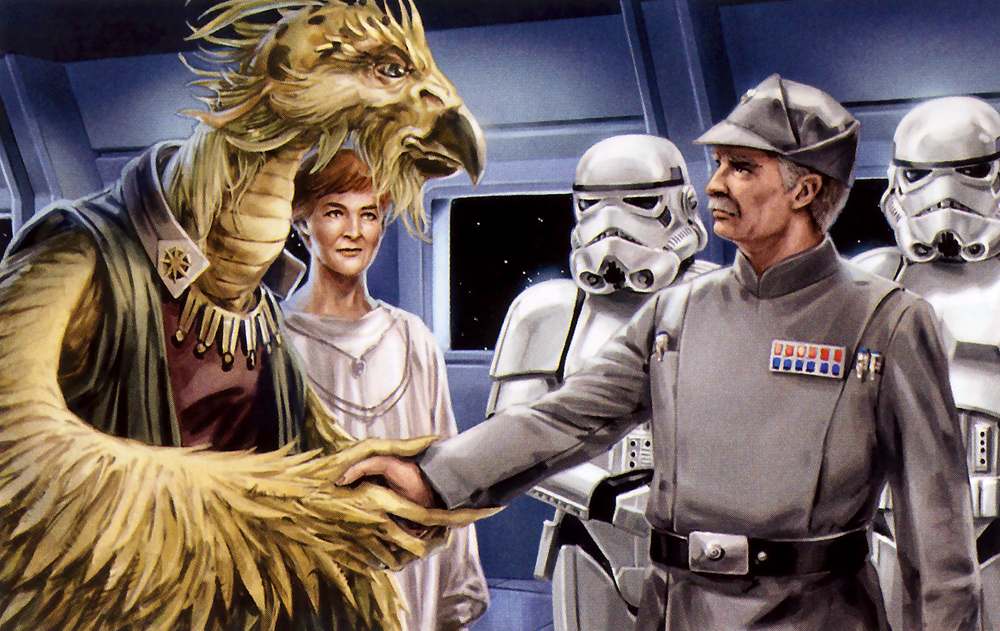
Barely a year into Emperor Palpatine's reign, the Empire's predecessor state became known as the "Old" Republic, primarily to emphasize the various justifications for the Republic's downfall and the Empire's creation. Although the Emperor dedicated much of his reign to gradually eliminating all remaining symbols that reminded the Imperial populace of their democratic past and heritage, the long history and cherished principles of the Old Republic were secretly cherished by a growing number of Imperial citizens who became disillusioned with the Empire due to the oppressive measures Palpatine implemented to further solidify his control over the galaxy.
By 2 BBY, the Emperor's tyranny motivated several dissidents within the Imperial Senate to create the Alliance to Restore the Republic, thus initiating the Galactic Civil War. Two years later In response to the insurrection, the empire abolished the senate, which had officially left the rebellion as a separate galactic government from the empire. Four years later, the deaths of both Emperor Palpatine and Darth Vader at the climactic Battle of Endor allowed the struggling Alliance to recover from near defeat while the Empire descended into chaos and disorder.
In the following week, the Rebellion fought in the Bakura Incident, immediately after that conflict the Alliance to Restore the Republic, was reorganized into the Alliance of Free Planets, in the following month, the Alliance of Free Planets fought in the Nagai Tof War and immediately after that conflict, the new alliance, was reorganized into the New Republic. In 6.5 ABY, the New Republic, took Coruscant, twice, from the local Imperial faction, thus the restored Republic had officially claimed authority over the galaxy. In 11 ABY, the New Jedi Order was created in the Jedi Praxeum, on Yavin 4. After the Imperial Reunification in 12 ABY, the Imperial Civil War had ended and unified the feuding Imperial factions into the Imperial Remnant. In 19 ABY, the New Republic and the Imperial Remnant signed a peace treaty that ended the Galactic Civil War, fifteen years after the Battle of Endor.
The memory of the Old Republic, along with many of its ideals, was further perpetuated after the New Republic reorganized itself into the Galactic Alliance, due to the four-year war with the extra-galactic Yuuzhan Vong, who themselves had briefly taken over the galaxy.
In 44 ABY, at the aftermath of the Lost Tribe War, the Imperial Remnant, was reorganized into the Fel Empire and about a month later, the galaxy's Second Cold War had began, this time between the newly restored Galactic Empire and the Galactic Alliance, which would last for several decades. In 127 ABY, the truce, between the Imperials and the Alliance was broken, when the Sith came out of hiding and declared war on the Galaxy, where the Fel Empire's influence increased significantly. In 130 ABY, the Fel Empire had finally taken over the Galaxy and the three-year war had come to a halt.
Their dominance was short-lived to a few months, when the resurrected Empire was overthrown by the Sith in a coup, in which they renamed it Darth Krayt's Galactic Empire, which divided the previous government into the Empire in exile and the Galactic Alliance Remnant, who began the Second Imperial Civil War and the Third Jedi Purge. In 138 ABY, Darth Krayt's Galactic Empire was taken down by an allegiance of the Galactic Alliance Remnant, the Empire-in-exile, and the fragmented New Jedi Order and created the new democratic government, known as the Galactic Federation Triumvirate. In 139 ABY, the GFT, would defeat the Sith, but their secular alliances, continued to fight the GFT for well over a year, until their own surrender in 140 ABY. Following the end of all these conflicts, the galaxy, had entered an era of peace and unity.
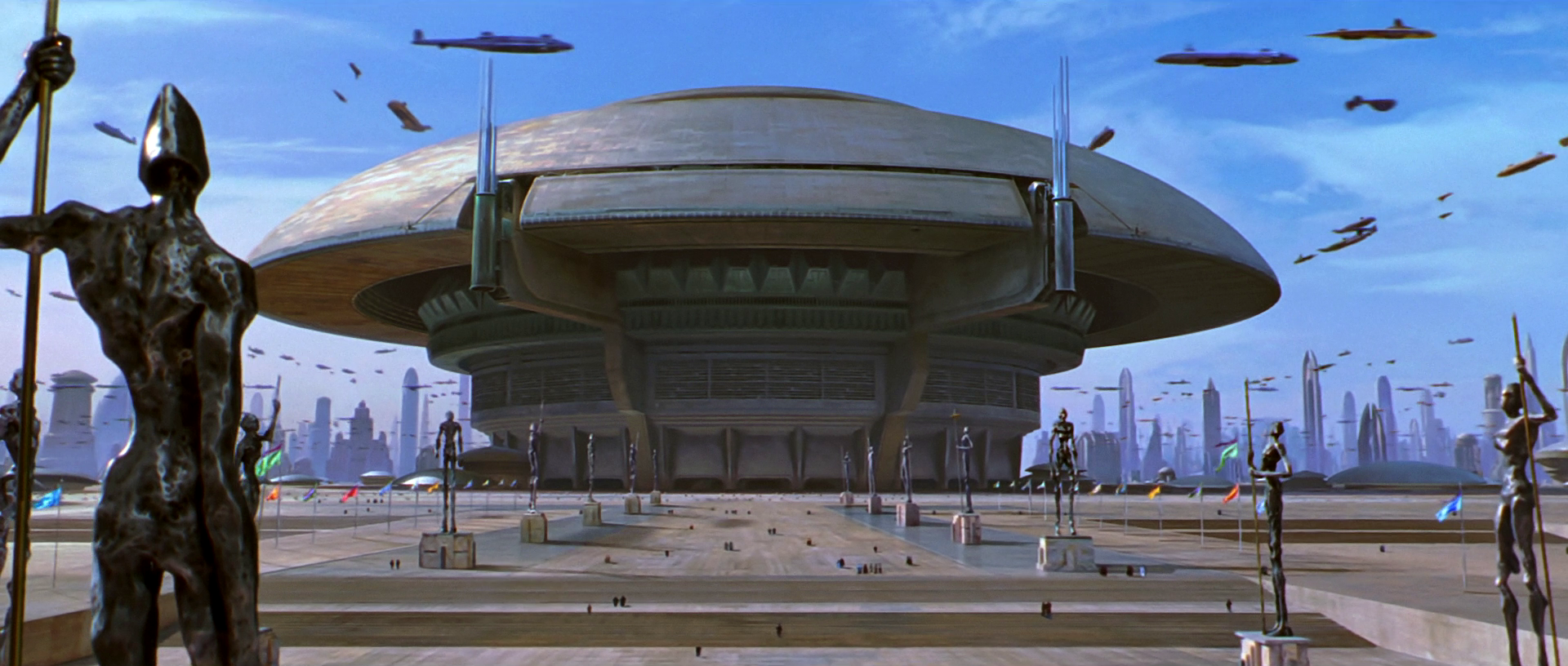
Originating as a collaborative network for mutual defense and shared economic benefits among numerous planets residing within the galaxy's core regions, the Republic suffered most from its deficiency in structured organization. Its operations heavily relied on non-legally binding constitutional agreements. These were, more often than not, disregarded and subverted by self-serving and dishonest politicians, instead of being respected and followed. It was commonplace to have coalition governments where special interests dictated the direction of legislation. In its later years, the Senate's ineffectiveness reached such a point that powerful corporations with political connections, along with informal groups of planets sharing similar ideologies, could essentially operate without constraint. Corrupt governmental structures even facilitated certain entities, like the Trade Federation, to amass their own virtually independent and formidable military forces.
However, the Republic's decline was characterized by widespread corruption and significant social inequalities. The Senate experienced a division between individuals genuinely dedicated to upholding the Republic's principles and ideals, and those prioritizing their personal ambitions. Following a succession of ineffective Chancellors and a crisis triggered by the Trade Federation's invasion of Naboo over a Senate-approved tariff, the need for decisive leadership to eradicate corruption became evident.
Much of the government's administrative functions were managed by the General Ministry. This encompassed the Ministries of State, Intelligence, Commerce, Defense, Education, Finance, Licenses and Permits, Public Information, Science, Security and Intelligence, Internal Security, and Science and Education.
Each system government, acting as a member state, dispatched a representative, known as a senator, to the central legislative body, the Senate. Senators functioned as ambassadors for their respective homeworlds, with member worlds retaining the autonomy to govern themselves and structure their societies according to their unique beliefs, traditions, and customs. A broad spectrum of local governments existed, ranging from monarchies to republics and hive-like communes. In some systems, senators were elected, while in others, the world government appointed them. Naboo's monarch appointed their senators, while the Alderaan Council of Elders elected their senator from among their members, usually the heir to the Royal House of Organa, who also led the council.
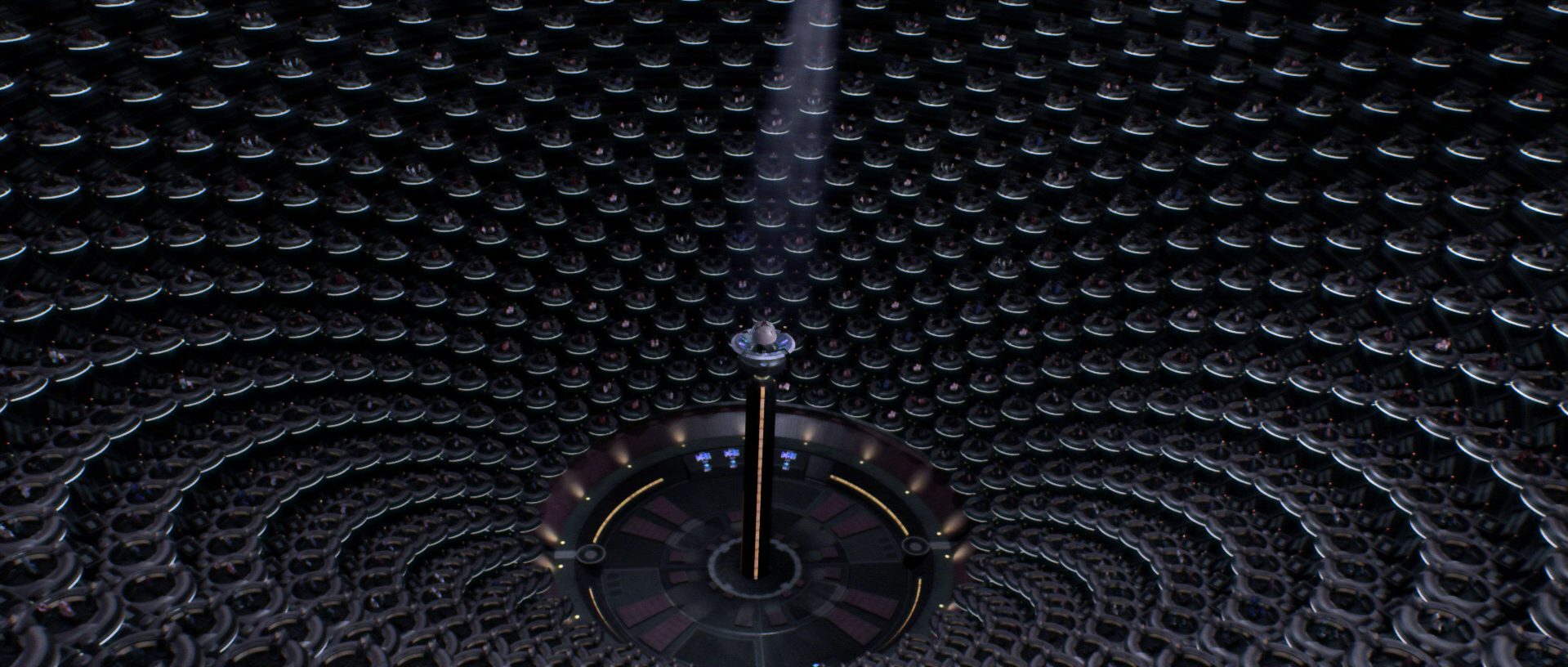
As the Republic's influence and authority grew, it incorporated new regions of the galaxy. A reorganization of senatorial representation took place in 1000 BBY during the Ruusan Reformation. The typical structure for these new territories involved grouping regions into sectors, each comprising approximately fifty inhabited worlds. Each sector was represented by a senatorial delegation. As the number of senators increased, sectors were further organized into roughly a thousand regions, each with a delegation to the Senate.
The Senate convened in a vast structure that housed numerous floating platforms, each accommodating several senators. Each platform symbolized a "sector" of the galaxy, with one senator representing each planet within that sector. Certain platforms represented individual worlds, while others represented powerful corporations and guilds such as the Trade Federation. Alongside senators, the leaders of individual member planets possessed the authority to vote and propose legislation in the Senate. The Senate adhered to parliamentary procedures, including the use of a Vote of No Confidence, exemplified by Queen Amidala's of Naboo motion that led to Chancellor Finis Valorum's removal from office in 32 BBY.
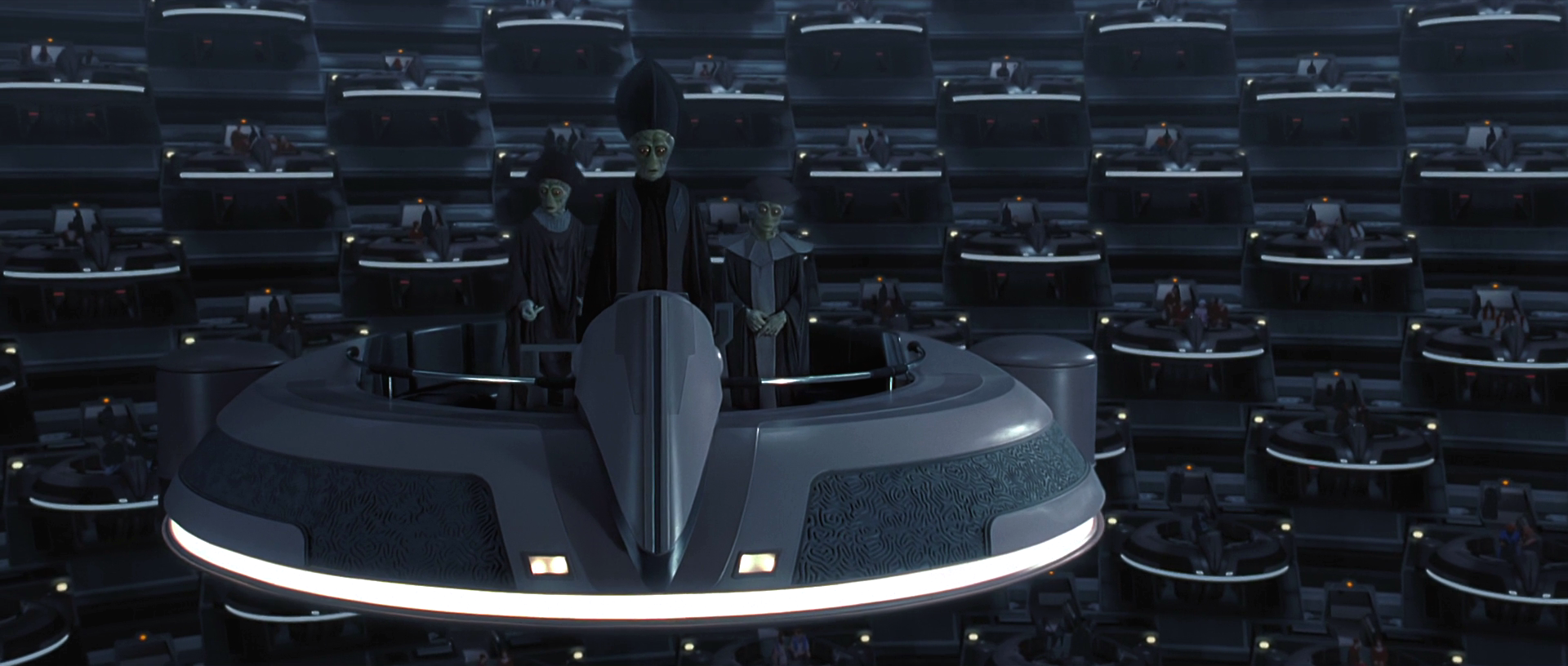
Each senator had one vote on all matters, whether procedural or substantive. The Chancellor was chosen from within the Senate. The assembly was further divided into specialized committees, each focusing on specific areas of government administration and responsible for drafting legislation for the full assembly's consideration.
While legislation passed by the Senate was binding on all member worlds, most of the day-to-day laws followed by Republic citizens were established at the planetary, sector, or regional level. Consequently, the Senate's primary functions were to mediate disputes between members, ensure common defense, and regulate trade between systems.
From among their ranks, the senators would elect a Supreme Chancellor to serve as the Republic's head of government (and, consequently, head of state) and chief diplomat.
In the Republic's final years, the office held little actual power, especially after the Ruusan Reformation, with the Chancellor primarily officiating parliamentary procedure and acting as a first among equals in the Senate. However, the Chancellor retained the authority to convene an Extraordinary Session of the Senate and invoke "Chancellor's prerogative" to bypass minor aspects of parliamentary procedure. The Chancellor also presided over the Senatorial Council.
Despite its diminished power, the position remained prestigious, with the Chancellor holding a grand office in both the Senate Rotunda's Chancellery and the dome-shaped Senate Office Building in Galactic City. The proper form of address for the Chancellor was "Your Excellency." The symbol of the Chancellor's office, as well as the Galactic Senate as a whole, was a fanned spear. This symbol was prominently displayed on the Chancellor's podium in the center of the Senate Rotunda's Main Chamber. When present in the Main Chamber, the Chancellor typically wore a Veda cloth robe. Chancellors were elected from among the senators of the Galactic Senate and served four-year terms. Term limits restricted Chancellors to two consecutive four-year terms.
The office gained considerable power during Palpatine's tenure as Chancellor. He successfully persuaded the Senate to grant him extensive "emergency" powers due to the Separatist Crisis and the subsequent Clone Wars, including an unconstitutional extension of his term beyond 24 BBY for the duration of the Separatist Crisis and authority as commander-in-chief of the new military during the Clone Wars. The Chancellor gained more direct control over administrative matters and the power to override local planetary and sectoral governments. The Sector Governance Decree allowed him to appoint military governors to every planet in the Republic, and the Security Act amendment granted him complete control over the Jedi Order and Republic military, stripping both the Jedi and the Senate of their previous oversight.
Ultimately, Palpatine transformed into a dictator and proclaimed himself Emperor of the galaxy, abolishing the office of Chancellor and converting the Galactic Republic into the Galactic Empire. The New Republic did not revive the position, opting instead for the title of Chief of State for its chief executive. Ironically, Palpatine's thirteen years in office, combined with his reign as Galactic Emperor, permanently tarnished the once esteemed position of Chancellor, rendering it too controversial to reinstate in the New Republic, despite its historical significance as a symbol of good in the Old Republic before Palpatine's rise.
The Court consisted of twelve justices (each addressed as "Your Honor"); one of them was the Chief Justice who headed both the Court and the judicial branch. The Supreme Chancellor nominated judges to the Court and the senate had to approve the nominations, while the nomination of the Chief Justice had to be confirmed by the judges of the Court.
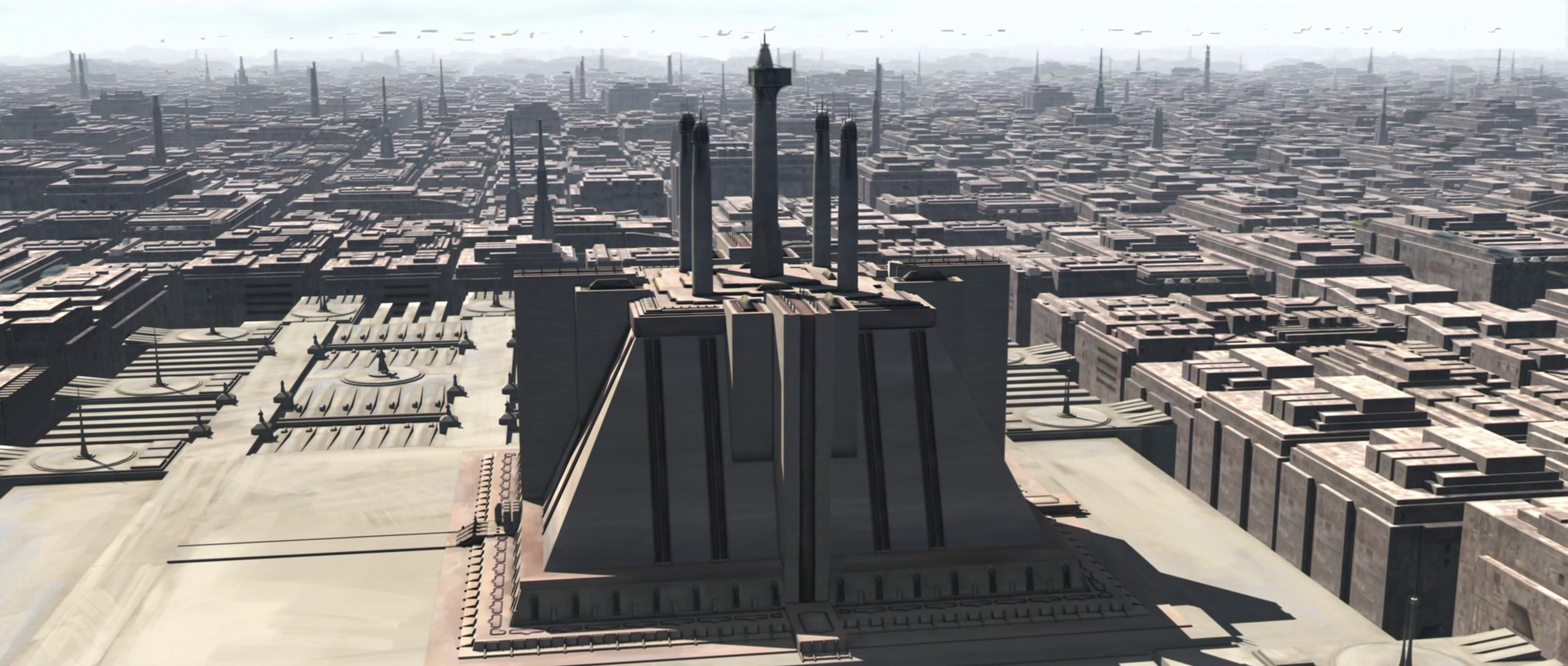
The Jedi Order had already been established for several centuries on the planet Tython when the Galactic Republic was formed in 25,053 BBY. Within a century of the Republic's inception, the Order pledged its support to the new government, formally becoming accountable to the Galactic Senate. Despite the Jedi's allegiance to the Senate, the Order maintained significant autonomy in its actions, particularly regarding internal Jedi matters. For millennia, members of the Jedi Order consistently served the Senate in various capacities, including as special emissaries, peacekeepers, and warriors.
However, as the Republic's influence expanded across the galaxy, unprecedented peace and prosperity led to growing corruption, decadence, and stagnation, especially among the elected officials of the Senate. Throughout this period, the Jedi Order upheld its traditions and principles, serving as a beacon of honor and integrity in an increasingly amoral and unjust society. The Jedi were aware of the Republic government's decline into greed and complacency, and many within the Order resented being accountable to an ineffective system that was too large and disorganized to effectively address the growing problems facing the Republic and its citizens.
Throughout its history, the Jedi were compelled to intervene on "behalf" of the Senate to quell internal and external threats to the Republic's stability. During the New Sith Wars, the Order was even forced to assume direct control of the executive office of Supreme Chancellor due to the Senate's inability to counter the threat posed by the Sith to the Republic's dominance. It took an entire millennium before the Jedi could risk relinquishing control of the government.
Following the presumed destruction of the Sith at the conclusion of the Seventh Battle of Ruusan, the Jedi Order enjoyed a thousand years of maintaining peace throughout the Republic without the threat of another galactic war. Although the demilitarization of the Republic armed forces placed a greater burden on the Order, the Jedi effectively ensured that the Republic's stability was not compromised by the sudden absence of a strong military force.
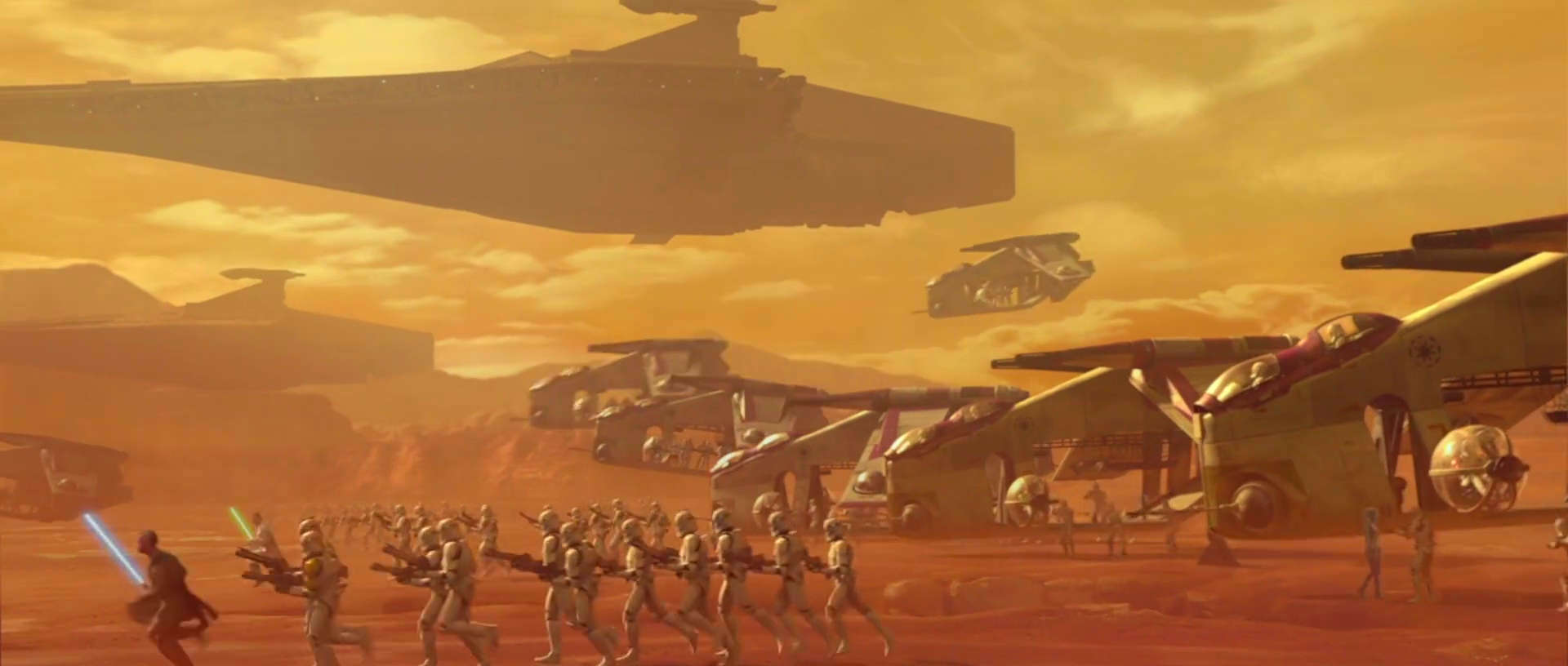
As the Republic neared its end, relations between the Jedi Order and the galactic government on Coruscant became increasingly strained. The Senate was dominated by self-serving delegates who disregarded the concerns of their constituents, rendering the few honest members ineffective. The Jedi Council grew increasingly disdainful of the Senate, believing that no politician could be trusted. Similarly, the Senate began to lose faith in its ancient protectors. As the Separatist Crisis escalated, threatening to divide the galaxy, many senators questioned the Order's ability to safeguard the Republic and its government.
Despite the animosity between the Order and the legislature, the Senate quickly commissioned the Jedi as officers in the newly formed Grand Army of the Republic. Throughout the conflict with the Separatists, the Jedi Order once again served as the Senate's armed force, leading millions of soldiers and securing numerous victories on battlefields across the galaxy. However, even as the Jedi championed the Republic's cause and led its army to victory, the relationship between the Order and the Senate did not improve. Tensions reached a breaking point when the Jedi Council considered seizing control of the Senate, an action they would have taken only if they had forcibly removed Chancellor Palpatine from office. The Council had clearly lost faith in the Senate's ability to maintain the Republic's stability during a crisis.
After the Council failed to arrest Palpatine, the public facade of the Sith Lord Darth Sidious, the Senate readily abandoned its Jedi guardians, doing nothing as the Great Jedi Purge began with Order 66 and Operation: Knightfall. With the Jedi neutralized and the Senate under Sith control, Palpatine easily transformed the Republic into the first Galactic Empire, with himself as emperor. During Palpatine's Declaration of a New Order, the vast majority of the Senate applauded the radical amendments that officially ended the Republic, which had existed for over 25,000 years. Simultaneously, the Jedi were hunted down and annihilated by the Empire, while the Senate made no effort to intervene on behalf of the organization that had protected them since the Republic's founding. For millennia, the Jedi Order remained loyal to the Galactic Senate, even during its most corrupt periods, only to be betrayed and abandoned by the elected officials they had sworn to serve and protect.
When the Senate was reformed after the Empire's fall and the rise of the New Republic, the undeniable contributions of the Jedi to the Old Republic convinced the New Senate to support the restoration of the Jedi Order. Throughout much of its history, the Jedi Order embodied the nobility of the Galactic Republic, enabling the Republic to exist as the pinnacle of galactic civilization despite an incredibly corrupt and inefficient legislature. Without the Jedi Order, the Republic would have collapsed under the Senate's weight long before its time, a fact proven when the near elimination of the Jedi allowed Darth Sidious to transform the Republic into the Empire.
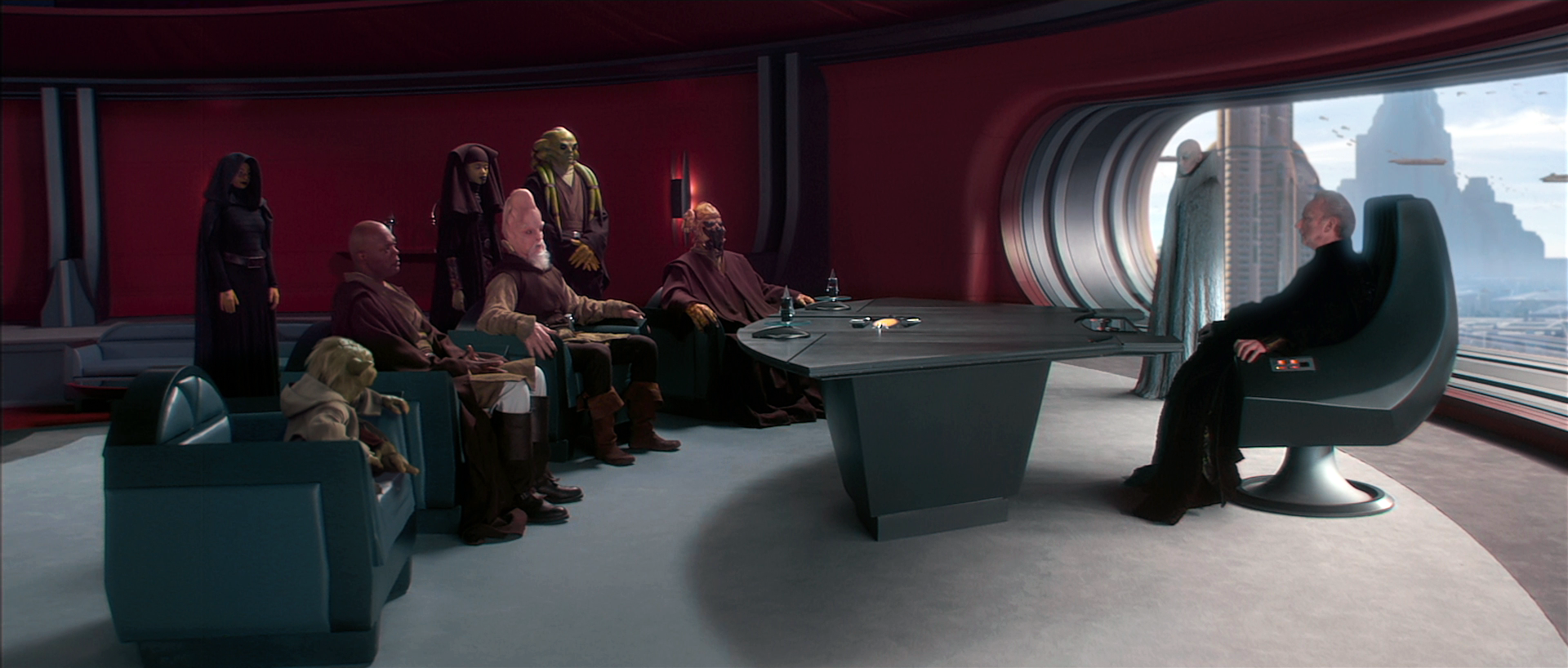
To improve the chances of preserving the fledgling New Republic, the Senate recognized the need to ensure the Order's full reconstitution. Even after the New Republic reorganized itself into the Galactic Alliance, a government that more closely resembled the Old Republic, the Jedi gradually resumed their former role as peacekeepers and emissaries for the Galactic Alliance Senate. By 44 ABY, the relationship between the Jedi and the government mirrored their former association with the Old Republic's Senate, culminating in another Jedi coup d'état against the government, which successfully overthrew a tyrannical head of state with the Senate's approval.
The Galactic Republic's impact on the galactic economy stemmed from its regulatory powers, production of Republic dataries, and authorization of relevant organizations.
Planetary trade formed the core of the galactic economy. While interplanetary trade could sustain local economies, advanced societies required extensive economic interaction and large-scale exchange, which could only be facilitated through interplanetary exports. Although some planets maintained their own shipping fleets, most relied on large freight firms like Xizor Transport Systems or independent freight haulers to transport their goods along major hyperlanes.
The Corporate Sector was established in 490 BBY to reconcile the differences between Republic lawmakers and corporate financiers. During the Galactic Republic's final millennia, commercial entities formed guilds to enhance their influence on legislation and improve efficiency. While most of these guilds, including the Trade Federation, Techno Union, and Commerce Guild, dissolved after the Clone Wars, surviving members joined the Corporate Sector Authority.
Thousands of currencies circulated throughout the galaxy. The Galactic Republic's dataries were arguably the most widely accepted form of currency. Due to the Republic's extensive membership, dataries were accepted on nearly all planets. From its inception, the credit was backed by the vast wealth of Muunilinst and the InterGalactic Banking Clan. During the Clone Wars, the IGBC supported the currencies of both sides.
Working beings were required to pay taxes collected by the Republic Tax Collection Agency. In the later years of the Galactic Republic, a 15% transit tax was imposed to generate revenue for the government.
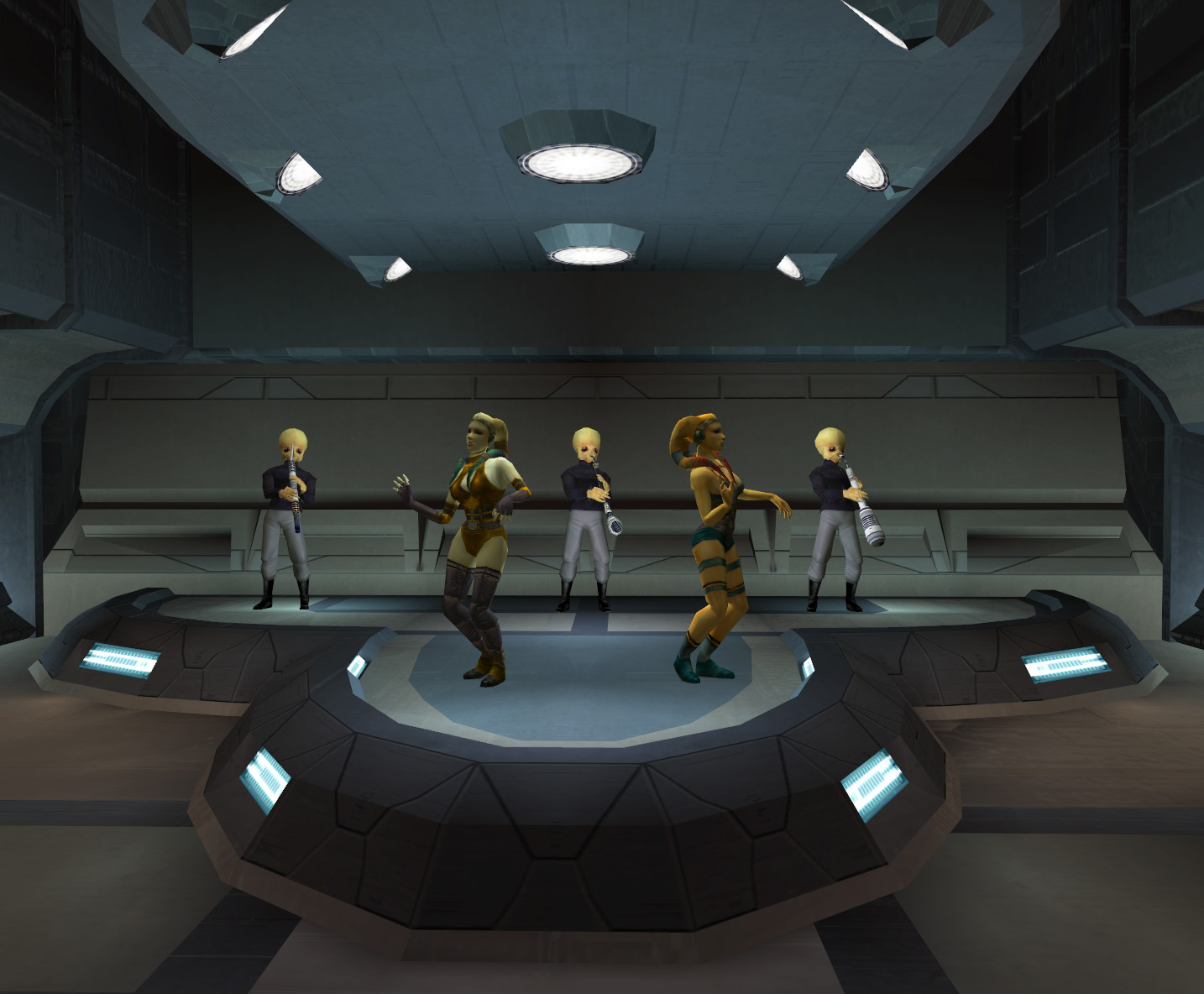
The Galactic Republic possessed a highly diverse culture. Member worlds were free to preserve their own cultures in accordance with local beliefs, customs, and traditions. The Republic encompassed a wide range of cultures, from religious communities like the Jedi to hive-like communes.
The Republic also maintained a liberal policy towards the arts. The dominant aesthetic style during the Galactic Republic era was characterized by opulence and ornamentation.
Although Humanocentrism was officially outlawed by the Rights of Sentience clause of the Galactic Constitution, it remained prevalent throughout the Galactic Republic's existence. Human-led organizations like Czerka enslaved entire nonhuman races, while planetary governments such as that of Taris reserved the best areas for Humans, forcing non-humans into ghettos. Non-humans constituted the majority of slaves in the galaxy. At the outbreak of the Clone Wars, lawsuits concerning pro-Human bias within the Republic government were still pending.
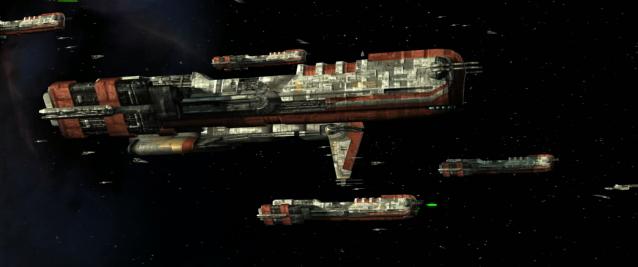
The Republic's early years were marked by conflict as it expanded across the galaxy and encountered numerous warlike species. The Republic recognized the need for an army and navy to maintain peace. The Republic's military forces served in numerous conflicts, including the Great Hyperspace War, the various conflicts of the Old Sith Wars, the New Sith Wars as well as the absolutely ravenous Great Galactic War.
Following the Ruusan campaign, the Republic decommissioned most of its military, retaining a small force solely for security purposes. This force later became known as the Judicial Department. This was to demonstrate the Republic's commitment to peaceful ideals, with Jedi Knights serving as "keepers of the peace."
Several trade corporations, such as the Trade Federation, the InterGalactic Banking Clan, and the Commerce Guild, maintained their own security forces to protect their profits, but they often abused this power, as seen in the Battle of Naboo. Individual sectors also maintained their own security forces, such as Naboo's Royal Naboo Security Forces or CorSec from Corellia, which were sometimes used to address minor threats. However, there was no centralized command, and the members of the late-period Republic loathed change.

The advent of the Clone Wars dramatically altered the existing state of affairs. Lacking a formal military structure to oppose the Confederacy of Independent Systems, the Republic saw the introduction of a proposed Military Creation Act. This proposition met considerable resistance from numerous pacifist leaders within the Republic, notably Padmé Amidala of Naboo, who expressed apprehension about the potential outbreak of war. Individuals like Orn Free Taa from Ryloth and Ask Aak representing Malastare were among the proponents of the Military Creation Act.
However, unbeknownst to many, a clone army had been secretly developed on the distant world of Kamino a decade prior. When it became evident that the Confederacy was unwilling to engage in negotiations with the Republic, the Republic embraced this army. Alongside the army came a vast array of military equipment, including AT-TE walkers, LAAT/i and LAAT/c gunships, A5 and A6 Juggernauts, Acclamator-class assault ships, Victory I-class Star Destroyers, and Venator-class Star Destroyers, BARC speeders, and countless other vehicles and spacecraft, all integrated into a unified force known as the Grand Army of the Republic. This military force was first deployed in 22 BBY on Geonosis to combat the Separatist droid armies. These dedicated soldiers participated in numerous battles across various planets, including Muunilinst, Dac, Jabiim, Praesitlyn, Cato Neimoidia, and even Coruscant. The unveiling of the Republic's clandestine clone army ignited considerable controversy throughout the Clone Wars. While the clones overwhelmingly declared their unwavering allegiance to the Republic and their willingness to fight and die for it, they were either viewed with pity by some sympathetic individuals or regarded with distrust and contempt by others. While certain Jedi, such as Etain Tur-Mukan, felt empathy for the clones and developed a connection with them, others, like Rahm Kota, harbored deep suspicions towards the clones and believed that non-clone soldiers were more effective on the battlefield. Despite the perception of the clones as a "slave army" and efforts to treat them humanely, the growing reliance on and sympathy for the clones proved to be a critical error on the Republic's part, as evidenced by Order 66 and the subsequent rise of the Empire. Under the Galactic Republic, some individuals were concerned about the clones and their well-being. However, under the Galactic Empire, they would never be regarded as anything more than what they had always been: a manufactured and expendable army of droid-like human soldiers.
In 19 BBY, Supreme Chancellor Palpatine restructured the Galactic Republic into the Galactic Empire. The loyal clone troopers of the Grand Army of the Republic were transformed into the feared stormtroopers of the Stormtrooper Corps, while the regular military personnel and starships were integrated into the Imperial Army and Imperial Navy, respectively. However, due to the accelerated aging of the clones, who aged twice as fast as ordinary humans, regular human recruits were eventually introduced into the stormtrooper ranks, much to the silent dissatisfaction of Jango Fett's clones. While the Stormtrooper Corps maintained a relatively even distribution between clones and natural-born soldiers, cloning was gradually phased out as the remnants of the fallen Empire were forced to rely entirely on ordinary humans and non-humans, effectively eliminating the last vestiges of the Galactic Republic's clone army.
The Galactic Republic encompassed a substantial portion of the known galaxy, extending from the Core Worlds to at least a segment of the Outer Rim Territories. It was generally understood that the government's influence in the outlying regions was limited, with its primary focus on the Core Worlds and Colonies. The precise number of planets within the Republic varied, ranging from three million to just over a thousand. However, in 21 BBY, it consisted of slightly less than 1.3 million planets, with approximately 10,000 to 40,000 systems under Separatist control. The Senate held sway over thousands of star systems, while more than two hundred systems had seceded to join the Confederacy of Independent Systems by the time Palpatine brought an end to the Republic.
Coruscant, a planet regarded as the galaxy's cultural and economic hub despite its location outside the Deep Core, served as the capital of the Galactic Republic. To emphasize its significance in galactic affairs, Coruscant was assigned the coordinates 0-0-0 in the standard galactic coordinate system.
In the Expanded Universe, the Republic is firmly established as having existed for 25,000 years, based on Obi-Wan Kenobi's statement in A New Hope that the Jedi had been "the guardians of peace and justice in the Old Republic" "for over a thousand generations." For an extended period, EU sources were the primary works set during the Republic era, most notably the widely acclaimed Tales of the Jedi sagas. However, in Star Wars: Episode II Attack of the Clones, Palpatine mentioned that the Republic had "stood for a thousand years." This statement appeared to contradict both the C-canon EU history and the G-canon internal continuity within the films. Within G-canon, the second season of the Clone Wars TV show referenced a fallen "Old Republic," in which the Jedi Order was also present, predating the Republic of the Prequel-era. Before that, in the Expanded Universe, the Ruusan Reformation—in which the Republic is reorganized following the already-established defeat of the Sith a thousand years prior to the films—was created by subsequent writers to provide an alternative explanation for Palpatine's statement, thereby harmonizing these sources to some degree. Palpatine could also be interpreting the Republic Dark Ages as a temporary dissolution, with the Republic essentially reforming after the Ruusan Reformation in 1000 BBY.
During the 2005 Cannes Film Festival, franchise creator George Lucas, while presenting the film and discussing the themes of democracy allowing itself to become a dictatorship, implied that the overall condition of the Galactic Republic in the prequel trilogy, particularly the events leading up to the Galactic Empire, was modeled after the Roman Republic under Julius Caesar, the revolutionary France under Napoleon Bonaparte, and the Weimar Republic of Germany under Adolf Hitler.